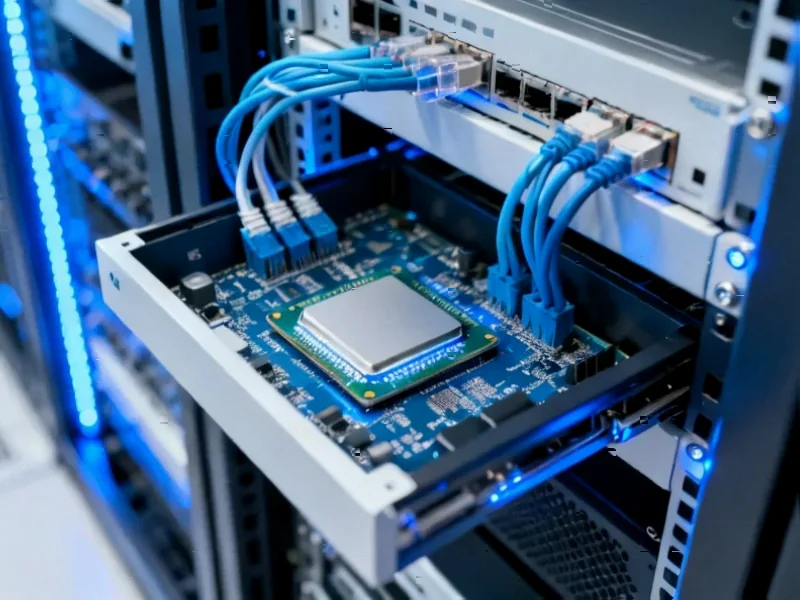According to PYMNTS.com, OpenAI CEO Sam Altman revealed the company’s revenue has surpassed the widely reported $13 billion figure and is growing steeply. During a recent podcast appearance, Altman indicated the company could reach $100 billion in revenue by 2027, accelerating previous projections of 2028-2029. The disclosure comes alongside OpenAI’s $38 billion agreement with AWS that provides access to hundreds of thousands of Nvidia GPUs and potential expansion to tens of millions of CPUs. Altman also outlined plans for building an AI factory capable of producing 1 gigawatt of compute per week at reduced costs, with the company committing to approximately 30 gigawatts of compute representing a total cost of ownership around $1.4 trillion.
The Staggering Infrastructure Reality of Frontier AI
What Altman’s revenue disclosure and infrastructure commitments reveal is the fundamental economic reality of scaling frontier AI models. The compute requirements for training and inference at OpenAI’s scale represent one of the most capital-intensive technological endeavors in history. When we talk about “hundreds of thousands of Nvidia GPUs” and “tens of millions of CPUs,” we’re discussing infrastructure that dwarfs what entire nations possess. The 1 gigawatt per week compute factory concept isn’t just ambitious—it’s necessary for the next generation of models that will require orders of magnitude more computational power than today’s GPT-4 and beyond.
Understanding OpenAI’s Revenue Acceleration
The steep revenue growth Altman describes reflects several converging factors beyond simple API usage. Enterprise adoption of ChatGPT Enterprise and custom model deployments represents a massive revenue stream that scales with usage. The company’s developer platform and fine-tuning services create recurring revenue from thousands of businesses building AI applications. More significantly, the shift toward multimodal models and agentic systems dramatically increases per-query computational costs, meaning revenue grows faster than user count. This creates a virtuous cycle where improved capabilities drive higher usage costs, which fund the compute infrastructure needed for further improvements.
Technical Architecture and Scaling Challenges
The AWS partnership reveals OpenAI’s multi-cloud strategy for managing unprecedented scaling requirements. Running workloads across AWS, Microsoft Azure, and potentially other providers requires sophisticated orchestration layers that can distribute inference and training across heterogeneous hardware environments. The technical challenge isn’t just acquiring GPUs—it’s building software systems that can efficiently utilize millions of distributed processors while maintaining model consistency and low latency. This infrastructure complexity explains why OpenAI needs partnerships with multiple cloud giants rather than relying solely on Microsoft’s Azure infrastructure, despite their close relationship.
The $1.4 Trillion Question: Financial Sustainability
While $13+ billion in revenue sounds impressive, the $1.4 trillion total cost of ownership for 30 gigawatts of compute raises serious questions about long-term financial sustainability. At current revenue growth rates, OpenAI would need to maintain exponential expansion for years to justify these infrastructure commitments. The company appears to be betting that model capabilities will advance sufficiently to create entirely new revenue streams that don’t exist today—perhaps through autonomous AI agents that can perform complex business processes or create entirely new software products. However, this strategy carries enormous execution risk if the anticipated capability improvements don’t materialize or if competing open-source models erode their market position.
The Coming IPO and Market Dynamics
Altman’s comments about “hurting short sellers” through a public offering suggest OpenAI is preparing for a fundamentally different relationship with capital markets than traditional tech companies. A potential $1 trillion valuation would make OpenAI one of the most valuable companies in history, yet its business model depends on continuously proving that increasingly expensive AI models can generate correspondingly higher economic value. The public markets will demand transparency about unit economics that private investors have been willing to overlook in pursuit of growth. This transition will test whether AI infrastructure spending can be justified by traditional financial metrics or whether we’re entering a new paradigm where compute itself becomes the fundamental measure of value.




